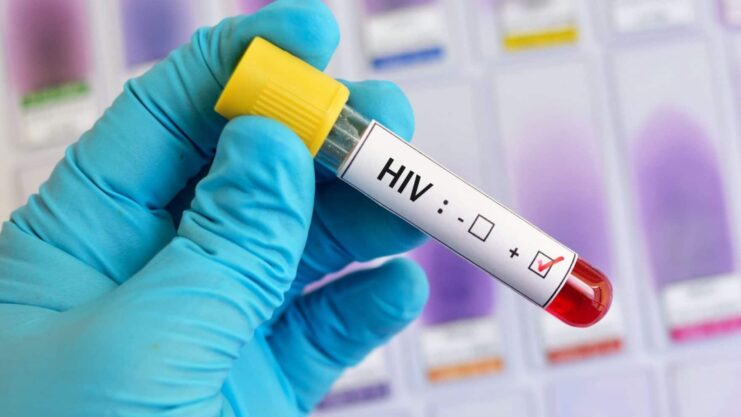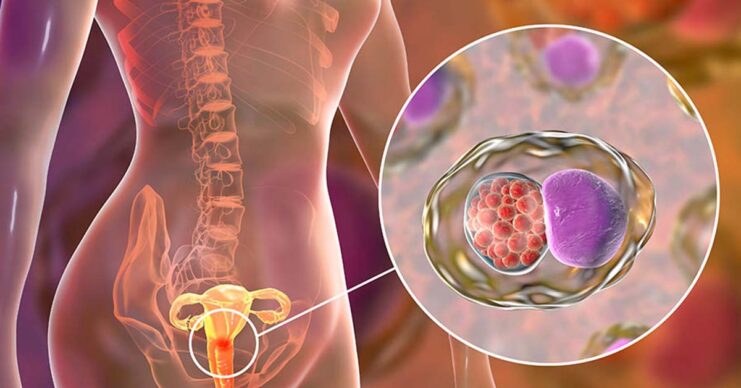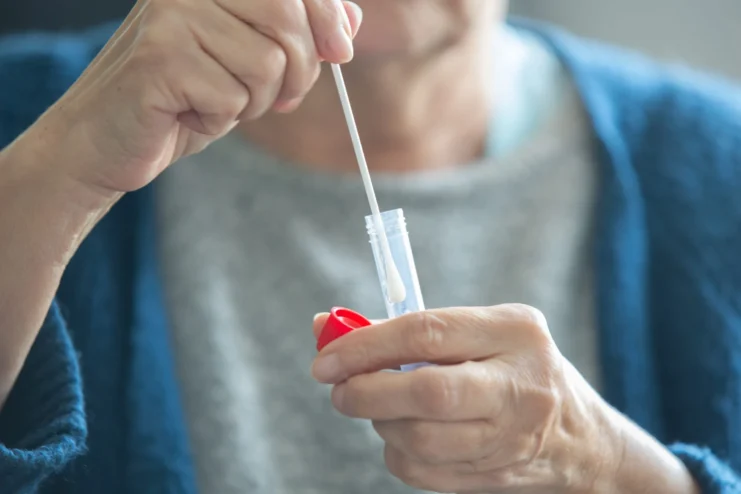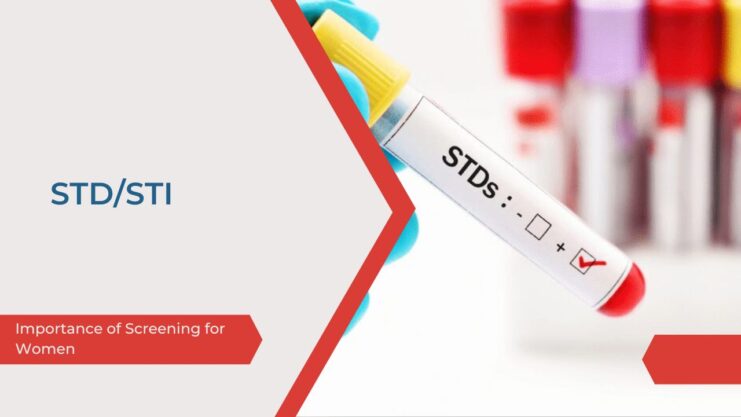Hey there! Let’s talk about something really important today – regular screening for STDs in women. Now, I know it’s not always the most comfortable or fun topic to discuss, but it’s incredibly important for our health and wellbeing.
Many women who are infected with STDs don’t show any obvious signs or symptoms, which is why regular screening is so crucial. If left untreated, these STDs can lead to serious long-term complications like infertility and cancer.
But don’t worry, getting screened is a simple and straightforward process that can make a world of difference in your overall health. So, let’s dive into what you need to know about STD screening for women.
It is very important to get regular screening for STDs
This is especially so in women because many women who are infected with STDs do not show any obvious signs or symptoms.
If left untreated, these STDs can lead to serious long term complications like Infertility and Cancer.
International and Singapore standard guidelines recommend screening for Chlamydia and a PAP Smear at least annually for all sexually active women.
What should Women Screen for?
1. HIV

An infection that will lead to AIDS.
Screening to be done at least annually for all sexually active women.
If there is a high risk exposure (e.g. Condom break), a HIV Combo test is recommended 1 month post exposure.
If the exposure is high risk (e.g. Known HIV +ve partner), HIV PEP treatment is recommended within 72 hours of exposure.
2. Syphilis
An infection caused by the Treponemal Pallidum Bacteria.
If left untreated can damage the brain and major blood vessels in the body.
Screening to be done at least annually for all sexually active women.
3. Hepatitis A, B and C
Viruses that infect the liver causing severe liver inflammation and increasing the risk of developing liver cancer.
Vaccines for Hepatitis A and B are available. Being vaccinated for Hepatitis B also cross protects for Hepatitis C.
Screening to be done at least annually for all sexually active women unless she has adequate antibody levels proving successful immunisation.
4. Herpes 1 and 2
An infection caused by the Herpes Virus that can cause very painful blisters and ulcers in the face or genital region.
Screening for Herpes is controversial as there is no known cure.
For women with symptoms, a swab test can be done to confirm the diagnosis.
For women with recurrent symptoms, they can be placed on tablets to prevent the ulcers and blisters from forming.
5. Chlamydia

A very common STD caused by the bacteria Chlamydia Trachomatis.
Up to 80% of women who are infected with Chlamydia will not show any symptoms.
Untreated Chlamydia infection can lead to Infertility.
Screening to be done at least annually for all sexually active women.
6. Gonorrhea
An infection caused by the bacteria Nesseria Gonorrhea.
Up to 10% of women infected with Gonorrhea will not show any symptoms.
Screening to be done at least annually for all sexually active women.
7. NSU – Mycoplasma, Ureaplasma
NSU stands for Non-Specific Urehtritis. It is also known as NGU or Non-Gonococcal Urehtritis.
Up to 80% of women who have NSU will not show any symptoms.
If left untreated it can lead to Infertility.
Screening to be done at least annually for all sexually active women.
8. HPV – Human Papilloma Virus
A virus that infects the Cervix, Vagina, Vulvar and Anal region.
It greatly increases the risk of developing Cervical Cancer as well as Vaginal, Vulvar and Anal Cancer.
Screening to be done at least annually for all sexually active women concurrently with the PAP Smear.
9. Trichomoniasis

A common infection caused by the parasite Trichomonas.
It can cause severe itching and ‘dead fish’ odour.
Screening to be done at least annually for all sexually active women.
10. Others
Other minor infections include Candida, Gardnerella, Streptococcus etc
Screening should be done after considering symptoms and at the discretion of the attending doctor.
What is the procedure?

There are 2 things that are required:
1. Blood
This is a standard procedure where blood is drawn from your arm.
Your blood will be drawn by professional certified doctors.
2. Vaginal Swabs
This feels exactly like a PAP smear.
A lubricated speculum (small plastic tube) is inserted gently into your vagina.
Small cotton tip swabs are then used to collect the specimen from either the cervix or the fornices (area around the cervix).
You will feel some pressure but the procedure should not be painful.
Your tests will all be conducted by professional qualified doctors.
Importance of Annual Screening for STDs:

Regular screening for STDs is vital for women’s health and wellbeing. Many women who are infected with them do not show any obvious signs or symptoms, and therefore they may be unaware of their infection. Without proper treatment, these infections can lead to serious long-term complications such as infertility and cancer. For this reason, it is recommended that all sexually active women get screened at least once a year.
STD screening is a simple and straightforward process. A healthcare provider will collect blood and/or vaginal swab samples, which will be tested for a range of STDs. The results of these tests will help determine if any treatment is needed. By getting regular screenings, women can protect their health and catch any potential infections early on, before they cause serious harm.
It’s important to remember that getting screened for STDs is nothing to be ashamed of. In fact, it is a responsible and proactive step towards maintaining good health. Regular screening can provide peace of mind and help ensure that women are taking care of their bodies in the best way possible.
The Procedure: What to Expect During Screening:
STD screening typically involves both a blood test and a vaginal swab. During the vaginal swab portion of the exam, a healthcare provider will gently insert a lubricated speculum into the vagina to access the cervix. Small cotton swabs will then be used to collect samples from the cervix or fornices, which are areas around the cervix. This portion of the exam may cause some slight pressure, but it should not be painful.
The blood test portion of the exam involves having blood drawn from the arm. This is a quick and relatively painless process that is over in a matter of minutes. After the samples are collected, they will be sent to a lab for testing.
It’s normal to feel nervous or anxious about STD screening, but it’s important to remember that healthcare providers are trained professionals who are there to help. They will do everything they can to make the exam as comfortable and stress-free as possible. Remember, STD screening is a simple and routine part of taking care of your health.
Dispelling Myths About STDs and Screening for Women:
There are many myths and misconceptions surrounding STDs and screening for women. One common myth is that only women who are promiscuous or engage in risky sexual behavior need to get screened for. In reality, anyone who is sexually active is at risk of contracting an STD and should get screened regularly. Another myth is that STDs can only be transmitted through penetrative sex. This is not true – many can be spread through other forms of sexual contact, such as oral sex or skin-to-skin contact.
Another misconception is that screening is painful or embarrassing. While the idea of a pelvic exam may be uncomfortable or intimidating, healthcare providers are trained to make the exam as quick and painless as possible. STD screening is a routine and important part of maintaining good health, and there is no need to feel embarrassed or ashamed.
It’s important to dispel these myths and educate women about the importance of regular screening. By doing so, we can help ensure that all women have access to the care they need to protect their health.
Screening and Pregnancy: What You Need to Know:
STD screening is especially important for pregnant women. Many can be passed from mother to baby during pregnancy or childbirth, which can lead to serious health complications for both mother and child. For this reason, it is recommended that all pregnant women get screened for STDs early in their pregnancy.
Long-term Effects of Untreated STDs in Women:
Untreated STDs in women can lead to serious long-term health effects. For example, untreated chlamydia or gonorrhea can lead to pelvic inflammatory disease (PID), which can cause chronic pelvic pain, infertility, and potentially life-threatening ectopic pregnancies. Additionally, HPV infections can cause cervical cancer and other types of cancer in the genital region. Furthermore, untreated syphilis can cause damage to the brain and major blood vessels in the body.
It’s important to note that many women who are infected with STDs don’t show any obvious signs or symptoms, which is why regular screening is crucial. Early detection and treatment of them can prevent the spread of the infection to others and minimize the risk of long-term health consequences.
If you’re sexually active, it’s important to get regular screening. Don’t wait until you have symptoms to get tested, as many STDs can be asymptomatic. Even if you’re in a monogamous relationship, you should still get screened regularly, as many STDs can be present for years without causing any symptoms. By getting tested regularly, you can protect your health and the health of your partner(s).
Prevention Strategies for Avoiding STDs in Women:
There are several strategies that women can use to reduce their risk of contracting STDs. These include practicing safe sex, getting vaccinated against certain STDs, and getting regular STD screening. Practicing safe sex means using condoms consistently and correctly every time you have sex, and limiting your number of sexual partners. It’s also important to communicate with your partner(s) about your sexual health and to avoid engaging in sexual activities if you or your partner has symptoms of an STD.
Vaccines are available for some, including hepatitis B and HPV. The hepatitis B vaccine is recommended for all infants and adolescents, as well as adults who are at high risk of infection. The HPV vaccine is recommended for all children aged 11-12, as well as for young adults up to age 26 who have not already been vaccinated. Additionally, the HPV vaccine is recommended for men who have sex with men and for people with weakened immune systems.
FAQ
How often should women get screened for STDs?
International and Singapore standard guidelines recommend screening for Chlamydia and a PAP Smear at least annually for all sexually active women. However, the frequency of screening may vary depending on factors such as age, sexual history, and risk factors for certain STDs.
What is the difference between an STD and an STI?
The terms STD (sexually transmitted disease) and STI (sexually transmitted infection) are often used interchangeably. However, an STI refers to an infection that may or may not cause symptoms, while an STD refers to an infection that has progressed to a disease with noticeable symptoms.
Can STDs be cured?
Many STDs can be cured with proper treatment, but some viral infections such as HIV and herpes have no cure. It is important to get screened regularly and seek prompt treatment if you are diagnosed with an STD.
Can I get an STD if I only have sex with one partner?
Yes, it is still possible to contract an STD even if you have only had one sexual partner. STDs can be spread through sexual contact with an infected partner, and some STDs such as herpes and HPV can be transmitted through skin-to-skin contact.
Can I still get screened for STDs if I don’t have any symptoms?
Yes, it is still important to get screened for STDs even if you don’t have any symptoms. Many STDs can be asymptomatic, and early detection and treatment can prevent long-term complications.
Conclusion
Regular screening for STDs is an important part of maintaining overall health and well-being for women. Many STDs can have serious long-term consequences if left untreated, such as infertility and cancer. International and Singapore standard guidelines recommend screening for Chlamydia and a PAP Smear at least annually for all sexually active women.
It is important to dispel myths and misconceptions about STDs and screening for women, and to educate oneself on the risks and prevention strategies for avoiding STDs. By taking proactive steps such as getting screened regularly, practicing safe sex, and maintaining good hygiene, women can protect themselves and their partners from the spread of STDs.












